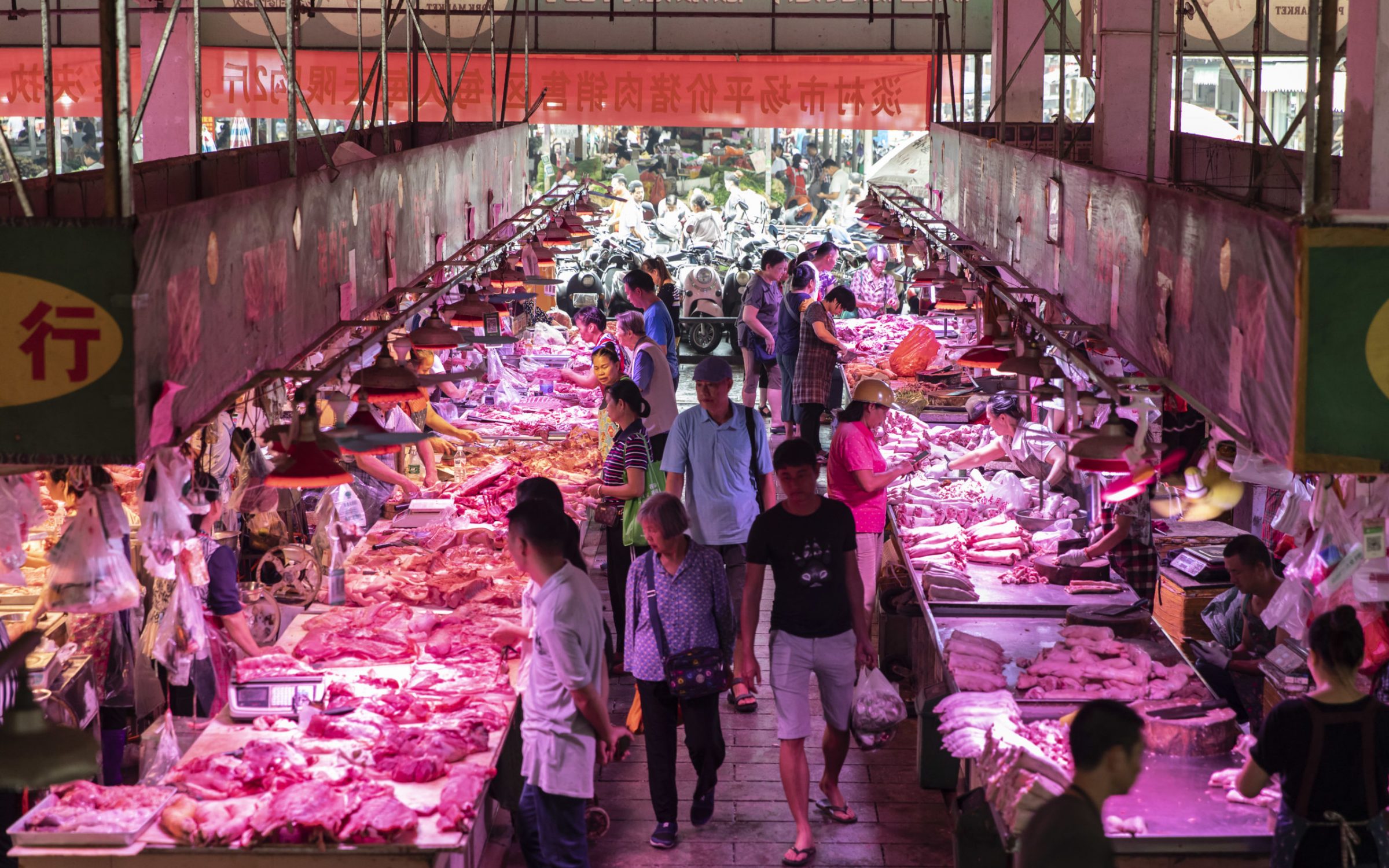Ebenezer Smith is a pseudonym.
Donald Trump calls it the “Chinese virus” – to widespread fury. China has expelled prominent American journalists and launched a disinformation campaign that accuses the American army of starting it. Taiwan has accused the World Health Organisation of ignoring its warnings in January about human-to-human transmission because of Chinese pressure.
Is China to blame?
There are two charges against the Chinese government over the coronavirus pandemic to be considered. The first is that it allowed risky “wet markets” to continue operating despite the warning of the SARS epidemic in 2003. The second is that it tried to suppress news about the new coronavirus and deny the evidence of human-to-human transmission until late in January, even silencing a whistleblower-doctor who later died.
There is currently a huge propaganda pushback being organised by the Chinese state on both issues and it is having an effect. Those who raise the matter of Chinese government responsibility are quickly accused of racism. This is deflection. Nobody is accusing ordinary Chinese people of anything. The charge is that the government acted in a way that allowed the pandemic to start and to worsen.
Yet already the media, fearful of being called racist, seems to have begun self-censoring. The news site Vox recently carried a video. The title was abruptly changed without explanation from “Why New Diseases Keep Appearing In China,” to “How Wildlife Trade Is Linked To Coronavirus.” CNN carried a long article that said “Scientists are still unsure where the virus originated,” before admitting several paragraphs later that the “likely epicentre” lies in “the so-called wet-markets of Wuhan, China — where wild animals are held captive together and sold as delicacies or pets, a terrifying mix of viruses and species can occur.”
This is something almost everybody agrees on. The earliest cases of the disease occurred very close to one of these markets in Wuhan. Here all sorts of exotic wildlife was on sale, alive, for eating and for use in Traditional Chinese Medicine. The strong belief that an animal is better for you or tastes better if you see it killed animates these markets.
It was the use of palm civets in medicine that almost certainly led to the SARS epidemic in 2002-3 and it may have been the same with pangolins in today’s epidemic. Civets were bred for sale in markets, and those in the market in Fushan, where the epidemic started, proved to be heavily infected with SARS, whereas those on civet farms were clear. So the infection jumped species in the market. The natural host turned out to be bats. Indeed a whole raft of human diseases have come from bats, most of them recently: rabies, ebola, Hendra, nipah, MERS as well as SARS.
“The presence of a large reservoir of SARS-CoV-like viruses in horseshoe bats, together with the culture of eating exotic mammals in southern China, is a time bomb,” wrote four Hong Kong scientists in 2007 – 13 years ago. Their warning was ignored.
A book published in 2016 stated that: “Bats are not specifically protected in China and many species are eaten, especially in southern China, where bats are found regularly in markets…Requests from international agencies following the SARS outbreak, (which resulted in several hundred human deaths) that wildlife legislation be introduced in China prohibiting inter alia hunting and sale of bats have been ignored.” That has now belatedly changed, with China temporarily banning wildlife markets. But they did that after SARS, too, and then reopened them.
Much of the demand for wildlife products is medicinal or at least tonic: the products are sold as good for health, or sexual potency, on the basis of zero evidence. The Chinese government has even encouraged the use of Traditional Chinese Medicine, despite the health risks and the impact on rare wildlife. In 2019, the state-run China Daily news quoted Xi Jinping himself as saying that “traditional medicine is a treasure of Chinese civilisation, embodying the wisdom of the nation and its people”.
To be clear, there is nothing inherently wrong with eating wild animals. Many people eat pigeons, deer and cod safely. What is dangerous is selling live wild animals in markets where infections can pass on easily or mix with those from other species.
In a convenient distraction from the wet-market theory, some western environmentalists are currently trying to pin the blame for this pandemic on the destruction of the natural environment, supposedly resulting in people coming into contact with wildlife such as bats for the first time. This idea, which has been doing the rounds for a couple of decades, is barking mad as an argument for three reasons.
First, human beings were in far closer contact with wildlife in the natural state in the past, when they routinely hunted animals for food in the forest, than they are now.
Second, SARS and COVID-19 came from urban markets and one of them originated in a farmed animal – the palm civet. Neither virus was encountered in a wilderness. The practice of wildlife farming of many exotic species is peculiar to China.
Third, there is no evidence of bat populations being under stress from climate change or habitat destruction at the present time, let alone any respectable theory about how stress would lead bats to give their diseases to people more readily. Indeed, China is one of the countries that is rapidly reforesting, rather than deforesting, making more habitat for bats. Bats are full of respiratory viruses because, like us, they gather in large crowds, at roosts, not because they are scarce. It is our modern urban living that has made us vulnerable, not our encroachment on nature.
What about the other argument, that the Chinese government covered up evidence of human-to-human transmission till well into January? The World Health Organisation, which has been accused of being very much in thrall to the Chinese government before, tweeted on 14 January: “Preliminary investigations conducted by the Chinese authorities have found no clear evidence of human-to-human transmission of the novel #coronavirus (2019-nCoV) identified in #Wuhan, #China.” Ouch. Already then there was a month’s worth of evidence of cases of human transmission.
A week later WHO’s secretary general, Tedros Adhanom Ghebreyesus, was briefed on the situation and announced sycophantically that: “I was very impressed by the detail and depth of China’s presentation. I also appreciate the cooperation of China’s Minister of Health, who I have spoken with directly during the last few days and weeks. His leadership and the intervention of President Xi and Premier Li have been invaluable, and all the measures they have taken to respond to the outbreak.”
Taiwan was already warning the World Health Organisation by this stage that something frightening was happening in China, but its warnings were ignored. Taiwan is excluded from the WHO at China’s behest.
On 30 December, Dr Li Wenliang sent a message to fellow doctors warning them of the threat of catching the new virus. He was reprimanded for “spreading false rumours” and police forced him to sign a statement that he had “seriously disrupted social order” and breached the law. Dr Li died of coronavirus in February.
Elsewhere in the world on 4 February, the mayor of Florence urged people to hug any Chinese people as a gesture of support against the virus.
Even writing down these facts is probably dangerous for a writer at the mercy of Chinese cyber warriors, and that is why I write this article under a pseudonym. But it seems to me that the Chinese government has serious questions to answer about its conduct in these two respects: its denial of the seriousness of the problem until late January; and its continuing failure to do anything about wet markets. That Donald Trump might also think something similar does not necessarily make it wrong.




